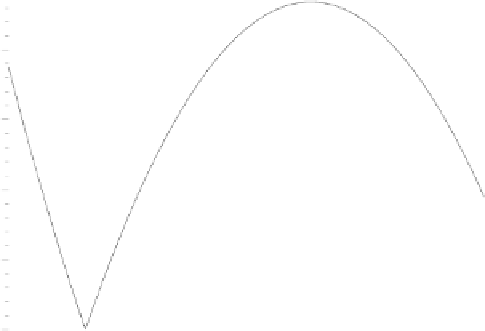Information Technology Reference
In-Depth Information
200000
150000
100000
50000
0
200
400
600
800
1000
x
Fig. 3.
Plot of the function
|f
(
x,
1)
|
,with
f
as in equation (3)
over the integers, since they are very close to a
real
-valued minimum of
|f
(
x, y
)
|
- see figure 3, and note that
f
(
x,
1) = 0 when
x
= (1299
−
√
937441)
/
2
≈
165
.
39.
Our initial data seemed to indicate that this “sticking” would happen to a
given population member within a very small number of iterations (of the order
of 100). In addition to this, Kelsey's heuristic procedure for culling weakest
members seemed to make little difference to the algorithm's performance. These
problems led us to experiment with several modifications to the BCA, designed
to improve its eciency:
1. Megamutation (i): If the fitness of an individual in the population has not
changed after 75 iterations, a fully randomising mutation operator is applied
to that individual's clones: in other words, they are reset to random strings.
2. Megamutation (ii): Extend megamutation by allowing clones with a lower
fitness to replace their parents regardless of their relative fitness.
3. Anti-elitism: At each iteration the fittest member of the population is killed
and replaced with a randomly initialized individual.
4. Megamutation (ii) + Anti-elitism: All modifications combined.
Of course the anti-elitism strategy is only suitable for problems where the
value of the optimum solution is known
apriori
, such as these Diophantine prob-
lems where we know that the value zero is an absolute minimum of
g
(
x, y, z
)=
|
. For problems where this is not the case, memory cells added into the
algorithm may be appropriate (in order to store the best solution so far).
f
(
x, y, z
)
|


